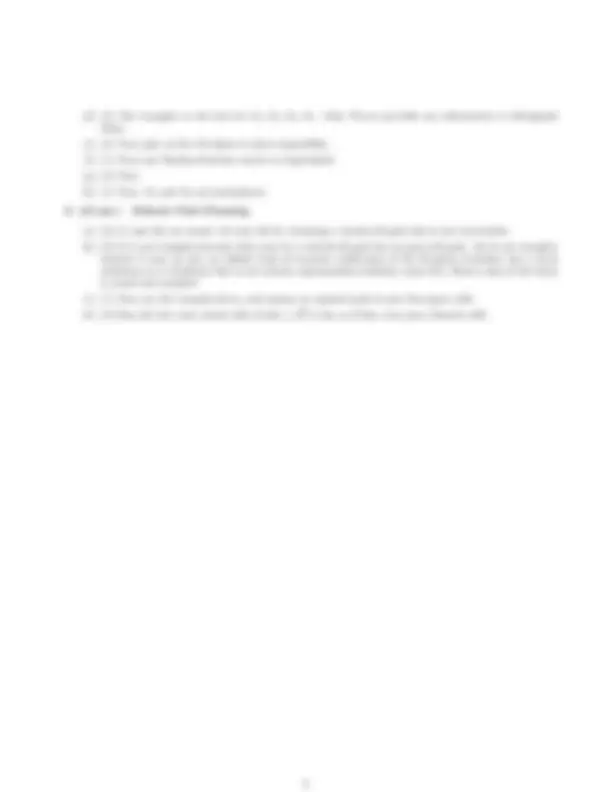



Study with the several resources on Docsity

Earn points by helping other students or get them with a premium plan


Prepare for your exams
Study with the several resources on Docsity

Earn points to download
Earn points by helping other students or get them with a premium plan
Community
Ask the community for help and clear up your study doubts
Discover the best universities in your country according to Docsity users
Free resources
Download our free guides on studying techniques, anxiety management strategies, and thesis advice from Docsity tutors
Solutions to the questions from the final exam of the introduction to ai course offered by professor stuart russell during the fall 2002 semester. The questions cover topics such as search algorithms, propositional and first-order logic, logical inference, probability theory, bayes nets, decision theory, dynamic bayes nets, learning, and robotic path planning.
Typology: Exams
1 / 3

This page cannot be seen from the preview
Don't miss anything!


(a) (1) False; Q(a) is not entailed. (b) (2) True; via P (F (b)). (c) (2) True; breadth-first FC is complete for Horn KBs. (d) (2) False; infinite loop applying the first rule repeatedly. (e) (1) False; P (b) is an example.
(a) (3) (ii) and (iii). (iii) is the “correct” model and (ii) is a complete network and can represent any distribution. (i) is incorrect because W rapper and Shape are in fact dependent. (b) (iii) because it is correct and minimal. (c) True; there is no link, so they are asserted to be independent. (d) 0.59; P (W = Red) = P (W = Red|F = s)P (F = s)+P (W = Red|F = a)P (F = a) = (0. 7 × 0 .8)+(0. 3 × 0 .1). (e) (3) > 0.99; P (F |S = r, W = r) = αP (S = r, W = r|F )P (F ) = αP (S = r|F )P (W = r|F )P (F ) = = α〈 0. 8 × 0. 8 × 0. 7 , 0. 1 × 0. 1 × 0. 3 〉 = α〈 0. 448 , 0. 003 〉. (f) (2) Strictly speaking, we have to assume risk neutrality, which is reasonable for one candy: 0. 7 s + 0. 3 a. (g) (3) This is tricky and can be viewed in several ways. Here’s one argument: Less than before. An owner of a wrapped candy has now lost a choice (eat or sell, vs. eat, sell, or unwrap) hence the state of owning the candy has lost expected value.
(a) (3) The only tricky bit is noticing that X and Y evolve independently of each other given the action.
1
2
2
2
2
3
3
3
3
(b) (2) After N 1 = 1, the agent could be in any of the four edge squares. Of these, only (2,1) and (2,3) are consistent with N 2 = 2 after Right. (c) (2) Could not have been in (1,2) and (2,2). (d) (2) False; even with no sensors, the agent can execute, e.g., LLDD and know that it is in (1,1). (e) (3) True; this DBN is not completely connected between layers, so its transition model will increase in size.
(a) (2) False positives are X 3 , X 4 , X 6. (b) (2) No false negatives. (c) (2) Only Sunny = T has a mixture of positive and negative examples.